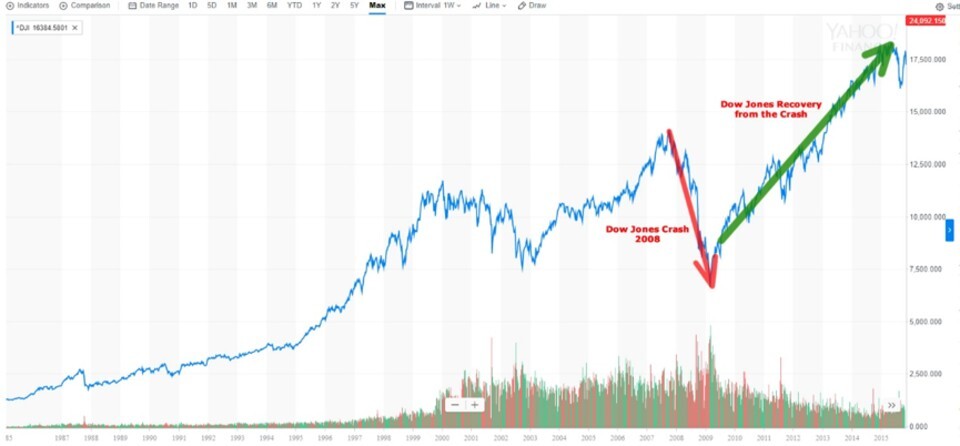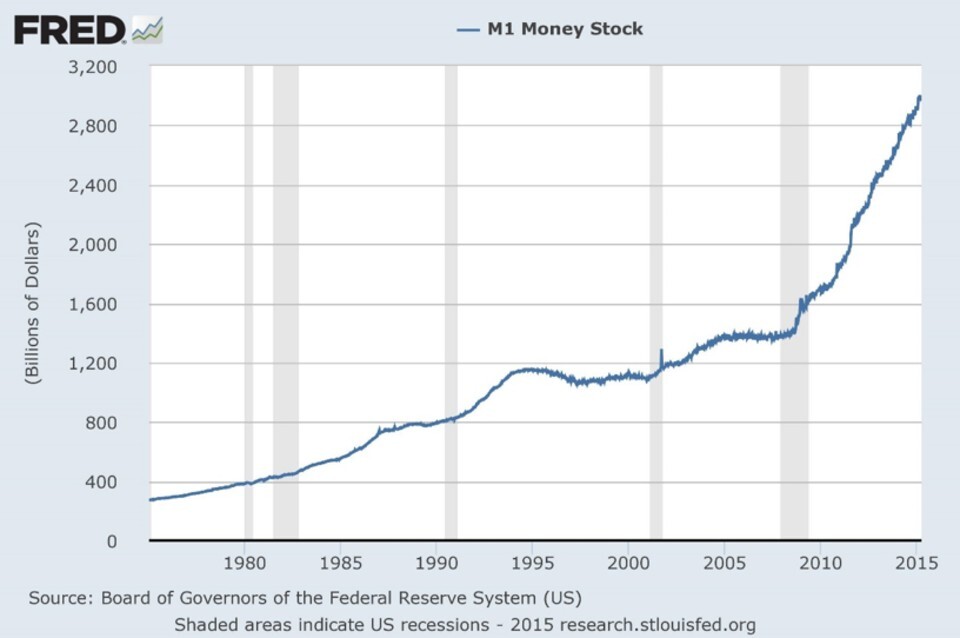The best way to predict the future is to look at the past.
The 2008 saw one of the worst financial crises in history – a crisis that had huge implications. It cannot be emphasized enough that what we faced during this financial turmoil was not just a disruption of credit, but a crisis of the very soul of capitalism.
As St. Bernard of Clairvaux warned us, "Hell is full of good intentions or desires." Nowhere was this more evident than when we saw the appalling naivete with which the so-called leaders dealt with the economic emergency. Consequently, many people suffered because of the actions of America's government and business leaders that caused and extended this economic emergency.
The after effects of the financial crisis of 2008 have been extensively analyzed in recent years. But what most people don't know is exactly what happened then to cause it.
The beginning
In 1971, President Richard Nixon, without congressional approval, took the US dollar off the "gold standard" (gold standard) and changed the rules of money – not just for the United States but for the whole world. Without congressional approval, he severed the US dollar's link to gold. He made this unilateral decision during a two-day meeting held quietly on Minot Island in Maine, without consulting the State Department or the International Monetary System.
President Nixon changed the rules because foreign countries being paid in US dollars became suspicious when the US Treasury Department. started printing more and more money to cover the debts. And they began to exchange their dollars directly for gold, severely depleting most of the US gold reserves. The treasury was emptying because the government was importing more than it was exporting and because of the costly Vietnam War. As the economy grew, it imported more and more oil.
This change was one of a series of changes that led to the current financial crisis that began in 2007. In fact, this change allowed the United States print almost unlimited amounts of money and create as much debt as they want.
In everyday terms, America went bankrupt. He was spending more than he was earning. The United States could not pay its bills – as long as the bills had to be paid in gold. By untying the dollar from gold and making it illegal to directly exchange dollars for gold, Nixon created a path for the U.S. print their way out of debt.
After 1971, the US dollar was no longer money, but rather a currency. For years, people around the world believed that US Treasuries were the safest investment in the world. For years, savers faithfully bought US Treasuries, thinking it was the smart thing to do. In early 2009, 30-year US Treasuries were paying less than 3% in interest. And since 2009, US bonds could be the riskiest of all investments.
Was this financial crisis just an accident, a sudden event? Some say yes. Others say no.
How can the crisis be resolved when the very people and organizations that created the crisis and profited from it are still responsible? The problem is that the crisis in America is not abating, as some hope. Rises. In the 1980s, government bailouts were in the millions. By the 1990s they were in the billions. To date it is in the trillions.
The crisis
In August 2007, panic silently spread around the world. The banking system collapsed. This set in motion a domino effect that even now threatens to bring down the entire world economy.
The following is a brief, and by no means complete, timeline highlighting some of the major global economic events that led to the precarious economic situation:
August 6, 2007: American Home Mortgage, one of America's largest home loan providers, has filed for bankruptcy.
August 9, 2007: French bank BNP Paribas, due to problems with subprime US mortgages, announced that it would not be able to value assets worth more than 1.6 billion euros.
As global credit markets locked up, the European Central Bank pumped nearly 95 billion euros into the Eurozone banking system in a bid to boost lending and liquidity.
August 10, 2007: A day later, the European Central Bank was pumping another €61 billion into global capital markets.
August 13, 2007: The European Central Bank issued another 47.6 billion euros, while the third cash inflow amounted to almost 204 billion euros over three business days.
September 2007: Northern Rock, Britain's biggest mortgage broker and a major consumer bank, experienced a raid by depositors. It was the first bank to do so in over 100 years.
October 9, 2007: The Dow Jones Industrial Average closed at a record high of 14,164 points.
A year later
September 2008: President George W. Bush and the US Treasury have called for $700 billion to bail out the economy, a year after the European Central Bank already pumped €204 billion into the economy in August 2007 and nearly a year after the record high all-time Dow Jones.
Toxic financial derivatives led to the collapse of Bear Stearns and Lehman Brothers and the nationalization of Fannie Mae, Freddie Mac and one of the world's largest insurers, AIG.
In addition, the US auto industry revealed that it was troubled, and GM, Ford and Chrysler asked for bailout money. Many state and city governments were also asking for bailout money.
September 29, 2008: On a black Monday after President Bush called for bailout money, the Dow Jones fell 777 points. It was the biggest one-day drop in history and the index closed at 10,365 points.
October 1, 2008, to October 10, 2008: In one of the worst periods on record, the Dow Jones fell 2,380 points in just over a week.
October 13, 2008: The Dow Jones started showing extreme volatility, rising 936 points in one day, with the largest daily gain in history closing at 9,387 points.
October 15, 2008: The Dow Jones fell 733 points to close at 8,577.
October 28, 2008: The Dow rose 889 points, its second-biggest daily gain in history, to close at 9,065.
November 4, 2008: Barack Obama was elected president of the United States with the campaign slogan "Change We Can Believe In". He will take over a government that has so far committed $7.8 trillion in various forms to rescue the economy.
December 2008: It reported that Americans lost 584,000 jobs in November, the largest loss since December 1974. Unemployment was recorded at a 15-year high of 6.7%, while nearly two million jobs were lost in the United States alone in 2008. Additionally, it reported that China, the world's fastest growing economy, lost 6.7 million jobs in 2008, a sign that the global economy was in serious trouble and on the verge of collapse.
Economists finally admitted that the US economy had been in a recession since December 2007. A year later, did economists finally get it?…
General Motors and Chrysler received $17.4 billion in government loans.
President-elect Obama announced an $800 billion stimulus plan focused on massive infrastructure projects aimed at easing US job losses. – on top of the $7.8 trillion already committed by the US government.
December 31, 2008: The Dow Jones closed at 8,776 points, 5,388 below the record set just a year earlier. It was the worst annual performance for the Dow since 1931 and tied with $6.9 trillion in lost value.
End
This record began with an important date: August 6, 2007. That was the day American Home Mortgage, one of America's largest home loan providers, filed for bankruptcy.
The reason this is important is that it marked the point where the debt had gone too far. The global system could not absorb any more debt. On August 6, 2007, the debt bubble burst.
The above analysis was based on some of the 'Rich Dad Poor Dad Daily' newsletters from Robert Kiyosaki's business group.
Today
The best way to predict the future is to look at the past. In 2020 there is a serious possibility that the next US stock market crash will occur. Which of course will cause a new domino in global markets similar and/or worse than the one created 12 years ago.
As of this writing on January 17, 2020, the Dow Jones is at 29,348 points... more than double the highs of 2007 that followed the Great Crash.

If one combines this with the graph below where it appears that we are going through the period with the largest money (dollar) issue of all time, this means that America has been trying for years to find a way out of the financial crisis by "printing money". And as new money is printed of course, existing money loses its value. People's wealth is extracted through the money they work hard for...oxymoron but true!

For this reason we analyze in the "game of money" (gameofmoney.gr) that in this day and age savers are the biggest losers.
All this happens whether we like it or not. Either we understand them or they look Chinese to us. Whether we consider them fair or unfair.
The biggest problem is that today, most people are too busy working for money. To work harder, get more tired and accumulate debt.
And since it is said that the definition of insanity is "doing the same thing over and over and expecting a different result each time", when it comes to money, many people are "insane".
In this extensive article we have seen the past. We delved deeper into how the game of money is played, a game that has been played since ancient times. In this game people always wanted to enslave others or take what others have.
Now it is your turn to learn how to play the right money game! This wonderful road it can start now for you too and it's full of surprises! It's your time. Dare it!
Alexios
…………………
The article was published on epixeiro.gr: www.epixeiro.gr/article/165558
…………………
Want to learn more about how to play the RIGHT MONEY GAME?
See here: http://www.gameofmoney.gr


